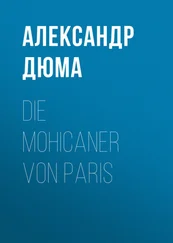Milburg Mansfield - Dumas' Paris
Здесь есть возможность читать онлайн «Milburg Mansfield - Dumas' Paris» — ознакомительный отрывок электронной книги совершенно бесплатно, а после прочтения отрывка купить полную версию. В некоторых случаях можно слушать аудио, скачать через торрент в формате fb2 и присутствует краткое содержание. Издательство: Иностранный паблик, Жанр: foreign_prose, Путешествия и география, на английском языке. Описание произведения, (предисловие) а так же отзывы посетителей доступны на портале библиотеки ЛибКат.
- Название:Dumas' Paris
- Автор:
- Издательство:Иностранный паблик
- Жанр:
- Год:неизвестен
- ISBN:нет данных
- Рейтинг книги:4 / 5. Голосов: 1
-
Избранное:Добавить в избранное
- Отзывы:
-
Ваша оценка:
- 80
- 1
- 2
- 3
- 4
- 5
Dumas' Paris: краткое содержание, описание и аннотация
Предлагаем к чтению аннотацию, описание, краткое содержание или предисловие (зависит от того, что написал сам автор книги «Dumas' Paris»). Если вы не нашли необходимую информацию о книге — напишите в комментариях, мы постараемся отыскать её.
Dumas' Paris — читать онлайн ознакомительный отрывок
Ниже представлен текст книги, разбитый по страницам. Система сохранения места последней прочитанной страницы, позволяет с удобством читать онлайн бесплатно книгу «Dumas' Paris», без необходимости каждый раз заново искать на чём Вы остановились. Поставьте закладку, и сможете в любой момент перейти на страницу, на которой закончили чтение.
Интервал:
Закладка:
“… His spirit was capable of all the miracles he performed; this he bequeathed and this survives… Your renown but continues his glory.
“… Your father and I were young together… He was a grand and good friend… I had not seen him since 1857… As I entered Paris Alexandre Dumas was leaving. I did not have even a parting shake of the hand.
“The visit which he made me in my exile I will some day return to his tomb.
“ Cher confrère, fils de mon ami, je vous embrasse.
“Victor Hugo.”Of Dumas, Charles Reade said: “He has never been properly appreciated; he is the prince of dramatists, the king of romancists, and the emperor of good fellows.”
Dumas fils he thought a “vinegar-blooded iconoclast – shrewd, clever, audacious, introspective, and mathematically logical.”
The Cimetière du Père La Chaise has a contemporary interest with the names of many who were contemporaries of Dumas in the life and letters of his day.
Of course, sentimental interest first attaches itself to the Gothic canopy – built from the fragments of the convent of Paraclet – which enshrines the remains of Abelard and Heloïse (1142-64), and this perhaps is as it should be, but for those who are conversant with the life of Paris of Dumas’ day, this most “famous resting-place” has far more interest because of its shelter given to so many of Dumas’ contemporaries and friends.
Scribe, who was buried here 1861; Michelet, d. 1874; Delphine Cambacérès, 1867; Lachambeaudie, 1872; Soulie, 1847; Balzac, 1850; Ch. Nodier, 1844; C. Delavigne, 1843; Delacroix, the painter, 1865; Talma, the tragedian, 1826; Boieldieu, the composer, 1834; Chopin, 1849; Herold, 1833; General Foy, 1825; David d’Angers, 1856; Hugo, 1828 (the father of Victor Hugo); David, the painter, 1825; Alfred de Musset, 1857; Rossini, 1868.
CHAPTER V.
THE PARIS OF DUMAS
Dumas’ real descent upon the Paris of letters and art was in 1823, when he had given up his situation in the notary’s office at Crépy, and after the eventful holiday journey of a few weeks before. His own account of this, his fourth entrance into the city, states that he was “landed from the coach at five A. M. in the Rue Bouloi, No. 9. It was Sunday morning, and Bourbon Paris was very gloomy on a Sunday.”
Within a short time of his arrival the young romancer was making calls, of a nature which he hoped would provide him some sort of employment until he should make his way in letters, upon many bearers of famous Bourbon names who lived in the Faubourgs St. Germain and St. Honoré – all friends and compatriots of his father.
He had brought with him letters formerly written to his father, and hoped to use them as a means of introduction. He approached Marshal Jourdain, General Sebastiani, the Duc de Bellune, and others, but it was not until he presented himself to General Foy, at 64 Rue du Mont Blanc, – the deputy for his department, – that anything to his benefit resulted.
Finally, through the kindly aid of General Foy, Dumas – son of a republican general though he was – found himself seated upon a clerk’s stool, quill in hand, writing out dictation at the secretary’s bureau of the Duc d’Orleans.
“I then set about to look for lodgings,” said Dumas, “and, after going up and down many staircases, I came to a halt in a little room on a fourth story, which belonged to that immense pile known as the ‘Pâté des Italiens.’ The room looked out on the courtyard, and I was to have it for one hundred and twenty francs per annum.”
From that time on Dumas may be said to have known Paris intimately – its life, its letters, its hotels and restaurants, its theatres, its salons, and its boulevards.
So well did he know it that he became a part and parcel of it.
His literary affairs and relations are dealt with elsewhere, but the various aspects of the social and economic life of Paris at the time Dumas knew its very pulse-beats must be gleaned from various contemporary sources.
The real Paris which Dumas knew – the Paris of the Second Empire – exists no more. The order of things changeth in all but the conduct of the stars, and Paris, more than any other centre of activity, scintillates and fluctuates like the changings of the money-markets.
The life that Dumas lived, so far as it has no bearing on his literary labours or the evolving of his characters, is quite another affair from that of his yearly round of work.
He knew intimately all the gay world of Paris, and fresh echoes of the part he played therein are being continually presented to us.
He knew, also, quite as intimately, certain political and social movements which took place around about him, in which he himself had no part.
It was in the fifties of the nineteenth century that Paris first became what one might call a coherent mass. This was before the days of the application of the adjective “Greater” to the areas of municipalities. Since then we have had, of course, a “Greater Paris” as we have a “Greater London” and a “Greater New York,” but at the commencement of the Second Empire (1852) there sprang into being, – “jumped at one’s eyes,” as the French say, – when viewed from the heights of the towers of Notre Dame, an immense panorama, which showed the results of a prodigious development, radiating far into the distance, from the common centre of the Ile de la Cité and the still more ancient Lutèce .
Up to the construction of the present fortifications, – under Louis-Philippe, – Paris had been surrounded, at its outer confines, by a simple octroi barrier of about twenty-five kilometres in circumference, and pierced by fifty-four entrances. Since 1860 this wall has been raised and the limits of what might be called Paris proper have been extended up to the fortified lines.
This fortification wall was thirty-four kilometres in length; was strengthened by ninety-four bastions, and surrounded and supported by thirteen detached forts. Sixty-five openings gave access to the inner city, by which the roadways, waterways, and railways entered. These were further distinguished by classification as follows: portes – of which there were fifty; poternes – of which there were five; and passages – of which there were ten. Nine railways entered the city, and the “ Ceinture ” or girdle railway, which was to bind the various gares , was already conceived.
At this time, too, the Quais received marked attention and development; trees were planted along the streets which bordered upon them, and a vast system of sewerage was planned which became – and endures until to-day – one of the sights of Paris, for those who take pleasure in such unsavoury amusements.
Lighting by gas was greatly improved, and street-lamps were largely multiplied, with the result that Paris became known for the first time as “ La Ville Lumière .”
A score or more of villages, or bourgs , before 1860, were between the limits of these two barriers, but were at that time united by the loi d’annexion , and so “Greater Paris” came into being.
The principle bourgs which lost their identity, which, at the same time is, in a way, yet preserved, were Auteuil, Passy, les Ternes, Batignolles, Montmartre, la Chapelle, la Villette, Belleville, Ménilmontant, Charenton, and Bercy; and thus the population of Paris grew, as in the twinkling of an eye, from twelve hundred thousand to sixteen hundred thousand; and its superficial area from thirty-four hundred hectares to more than eight thousand – a hectare being about the equivalent of two and a half acres.
During the period of the “Restoration,” which extended from the end of the reign of the great Napoleon to the coming of Louis-Philippe (1814-30), Paris may be said to have been in, or at least was at the beginning of, its golden age of prosperity.
Читать дальшеИнтервал:
Закладка:
Похожие книги на «Dumas' Paris»
Представляем Вашему вниманию похожие книги на «Dumas' Paris» списком для выбора. Мы отобрали схожую по названию и смыслу литературу в надежде предоставить читателям больше вариантов отыскать новые, интересные, ещё непрочитанные произведения.
Обсуждение, отзывы о книге «Dumas' Paris» и просто собственные мнения читателей. Оставьте ваши комментарии, напишите, что Вы думаете о произведении, его смысле или главных героях. Укажите что конкретно понравилось, а что нет, и почему Вы так считаете.












